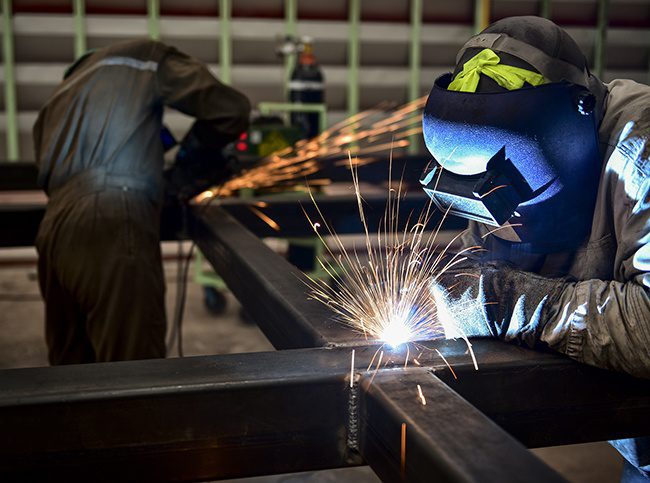Differences in Stitch Welding Versus Seam Welding

A fabricated structural steel product is only as good as the weld that keeps it together. Not only is it important for an engineer to determine the proper weld to use, but also the welding technique to implement. That can be a little trickier.
Two Techniques: Seams & Stitcheserror
Generally, engineers and welders have two welding techniques to choose from on a project; seam welding and stitch welding. Both are often interchangeable, and it is common for many to be confused with the differences in them. Both techniques apply heat to melt and join metal. This changes the properties of the metal, and causes expansion and contraction.
That is where choosing the proper welding technique to use comes in.
Both welds have different strength properties and are used for different purposes. Picking the proper weld could mean the difference between a failing joint and a long-lasting weld.
Typically, the designer will decide if a project calls for a stitch weld or seam weld. The strength required in the joint, what the fabricated product will be used for, and other design aspects will be factored into the decision on the weld to be used. Welding instructions will then be put on the fabrication drawing. This tells the welder, among other things, whether to use stitch or seam welding while completing a project.
Stitch Welding
Stitch welding is intermittent. It involves initiating a weld, welding for a portion of the joint length, terminating the weld, and then starting again along the joint a specified distance from the previous weld. This can be done for both corner and flat welds.
Stitch welding (intermittent welding) may be used to limit the amount of heat transferred to a part because large amounts of heat can cause part distortion. High heat can also negatively impact a material’s chemical and mechanical properties. With stitch welding, these negative effects can be limited.
It also means less filler metal is used, which saves money, and the weld is usually completed in less time than if it was continuous. Reducing the weld time expedites the fabrication process.
Stitch welding does have some disadvantages. When the overall weld length is reduced, this oftentimes comes with a reduction in the strength of the weld joint. Also, the portions of a weld joint that are left unwelded could be in the form of a crevice. This crevice may accumulate foreign material that could increase the corrosion rate of the base material.
Seam Welding
A seam weld is a continuous weld along a joint. This can also be done for both corner and flat welds.
This is often seen where pipe or tube is welded. Seam welding is robust and is more durable because of the amount of surface area that is joined by a weld. Seam welding produces an extremely durable weld because the joint is forged due to the heat and pressure applied.
The semi-molten surfaces are pressed together by the welding pressure that creates a fusion bond, resulting in a uniformly welded structure. A properly welded joint formed by resistance welding can easily be stronger than the material from which it is formed.
Stitch welding is the typically the default choice for most applications because it minimizes distortion and saves a little money, but there are times when seam welding yields a better result.
A custom metal fabricator, like Swanton Welding, can design you project and provide the proper welds to make it a success. Swanton Welding is experienced with multiple types of welding techniques. If you have a fabrication project or need custom fabrication solutions, call us today at 419-826-4816.

